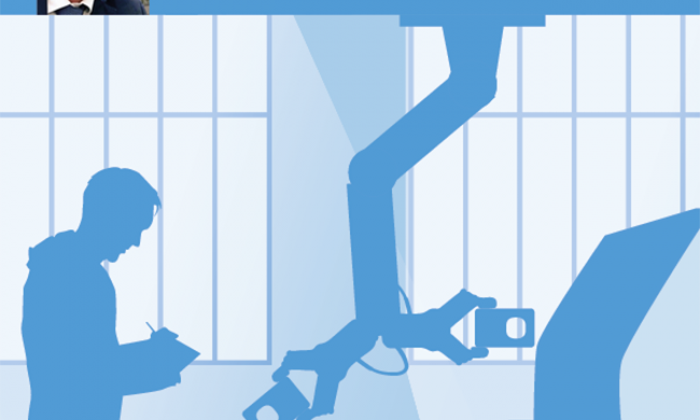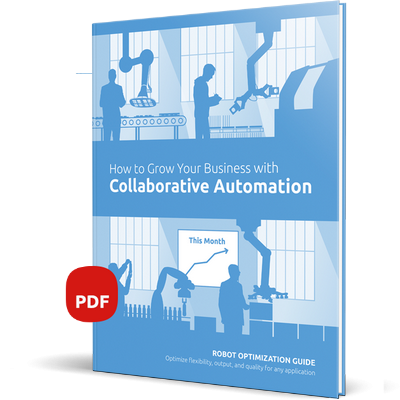#THOUGHTSONROBOTS: Roberto Facchinetti, CEO - Alumotion, Italy


Roberto Facchinetti, CEO at Alumotion, Italy - answering our questions on robotics
What are the biggest trends within the field of collaborative robots and applications right now?
We're seeing growing maturity in the approach towards collaborative robots by the market. While in the past we've seen a number of early adopters be mesmerized by the technology and its possibilities but having a hard time turning it into concrete applications, now the focus is shifting more and more towards the overall process (input, robotic cell, output). This is a very good signal, as more and more companies are reaping for good the benefits of collaborative robots, and as they grow more confident with them and their potential outcome, they invest further.
How do you see the current trends within the area of end-of-arm tooling?
We consider it an area where there's lots of room for innovation: The current end effectors are already making possible applications which where unthinkable just a few years ago, but we expect a number of improvements become reality really quick, making collaborative robots a possible choice in even more usage scenarios.
Why do you think the sale of collaborative robots has increased with 23% from 2017-2018?
As the novelty effect is fading, the trend we are seeing the most is the choice by companies that got their feet wet with collaborative robots to dive for more: More robotic cells, but as well usage of the same robot in more applications. As confidence grows, it becomes clear that cobots are a viable tool in more than a scenario, and this fuels the double digits growth we're seeing.
Where do you see the biggest potentials for collaborative robots and applications in the next 5 years?
I think it would be presumptuous of me to say that: We've worked on robotic cells in so many industries and usage scenarios (we have more than 800 out there) and still, I feel like we're just scratching the surface. Will we see VR prototyping become mainstream? Digital twin scenarios powered by artificial intelligence? Anything is possible, 5 years is quite a timespan, just look at where we were 5 years ago and where we are now.
How do you see the perspectives for the use end-of-arm tooling in the next 5 years?
I see a growing trend of intelligence being transferred to the edge: The more the end-of-arm tools become aware of what their dealing with, the easier the overall process becomes. To a given extent this requires new sensors, but it's not just hardware, software can make huge leaps ahead too.
Which working processes have the biggest potential for using collaborative robots and applications?
I can tell you the ones I love to see growing: Those that put human beings at risk of injuries or stress due to repetitive actions. The more we are able to deploy robotic cells that help people work healthier, the more the impact of this technology goes in the right direction.
In your opinion, in which industries can end-of-arm tooling create most value for end users?
I would talk more about processes rather than industries: Take for example palletization. We can radically change that part of many industries process, turning it into one that is a win for everyone.
What are the biggest challenges the collaborative robot industry will face the next 5 years?
Adoption comes with knowledge and trust. You can gain knowledge through courses and classes, but you can gain trust only by seeing collaborative robot cells in action, day after day, on the field, making their worth together with your workers. I guess as these two factors spread, everything else will fall in line.
How should the collaborative robot industry, in your view, overcome the challenges?
A huge challenge is to avoid being "greedy": We're in for the long game, but not so other players we've seen pushing the product beyond the benefit it can provide. Cobots don't work on their own: Proper robotic cells need to be studied, the right end-of-arm tools needs to be carefully selected for the intended tasks and in general, care and competence need to be put towards giving value to the customers. If we are able to avoid overselling, that's already a great step in the direction of building a healthy industry.
What is most important when robot companies develop new collaborative robots, applications and end-of-arm tooling?
They really have to think of the process: Input, robotic cell, output. Of course, it's a game of numbers, so the most common processes and situations will be addressed first, but I see already lots of flexibility and I expect much more to become available in the coming years.
Do you have a “favorite” collaborative robot or application?
We currently see palletization, a situation we've developed a ready to use solution for, as something that can tremendously benefit from a robotic cell, regardless of industry. Sure, not each and every usage case is a match, but they really are growing rapidly.
What is your personal motivation for working within the robot field?
We started Alumotion many years ago, when cobots were more of a promise than anything else: We saw the potential and wanted to be part of it and now, as we see more and more companies getting the benefits of proper robotic cells being designed and implemented, we truly feel we're part of a bigger change, something that accelerates an overall process that ultimately is going to be for the better.
What has surprised you the most working in the robot industry?
The extremes: We've seen people really excited about the opportunities, really wanting to go for them, but ultimately not making the most out of their investment, as they didn't really work on their numbers and focus on the process. On the other side, we've seen lots of companies turning down investments that could have got them with a positive ROI in literally a few months, out of fear for something they believed they couldn't control, pretty much as it's been in the past with the first computers. We feel we have a responsibility with both these type of customers, helping them make a more rational choice that, of course, requires some homework to be done and the proper expertise, but ultimately can put on the table much more value and, for all of us, satisfaction.
-----------------------------------------------------------------------
#ThoughtsOnRobots
#ThoughtsOnRobots is a series of blogposts on onrobot.com where world leading experts, industry influencers and companies answer a number of questions about their views on the industry, trends, challenges and potentials.

|
Jak rozvíjet podnikání pomocí kolaborativních aplikací
Díky rozkvětu chytřejších a přizpůsobivějších nástrojů mohou roboty nyní fungovat rychleji, přesněji a s větší silou, plnit celou řadu úkolů a zároveň maximalizovat návratnost investic. V naší elektronické brožuře získáte další informace o tom, jak zrychlit produkci při nižších nákladech.
ZÍSKAT BEZPLATNOU ELEKTRONICKOU BROŽURU
|

|

